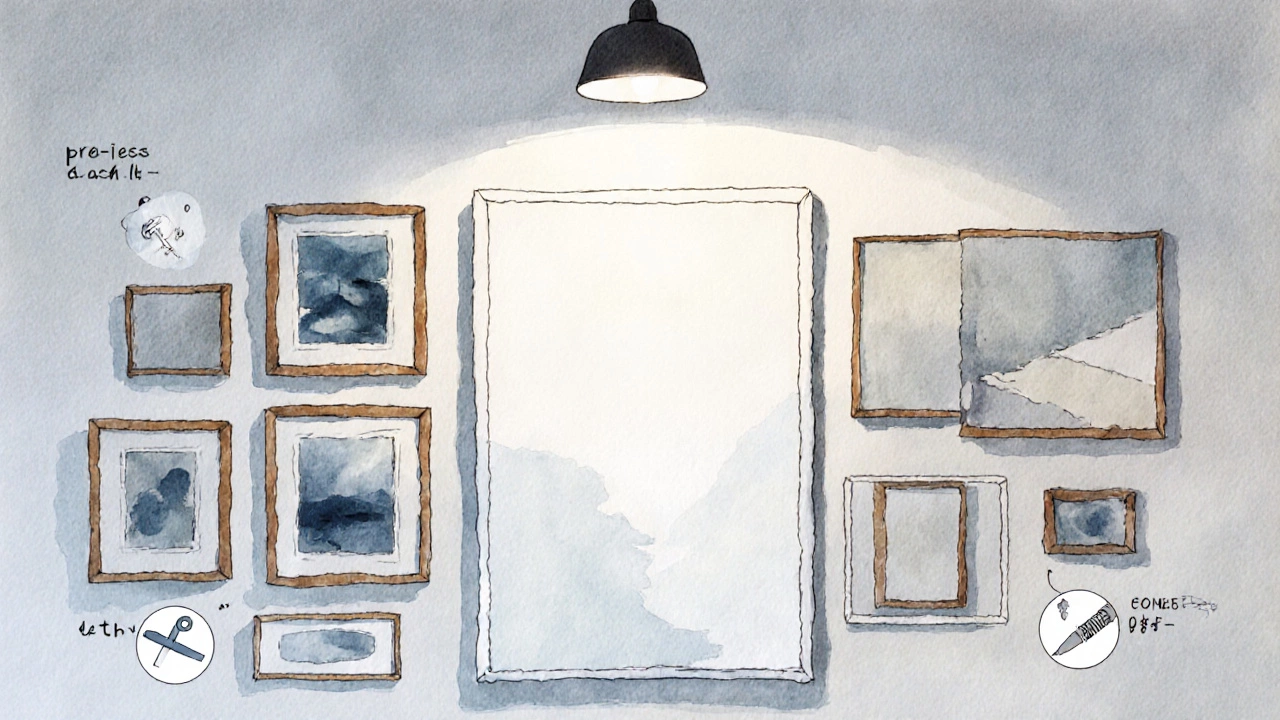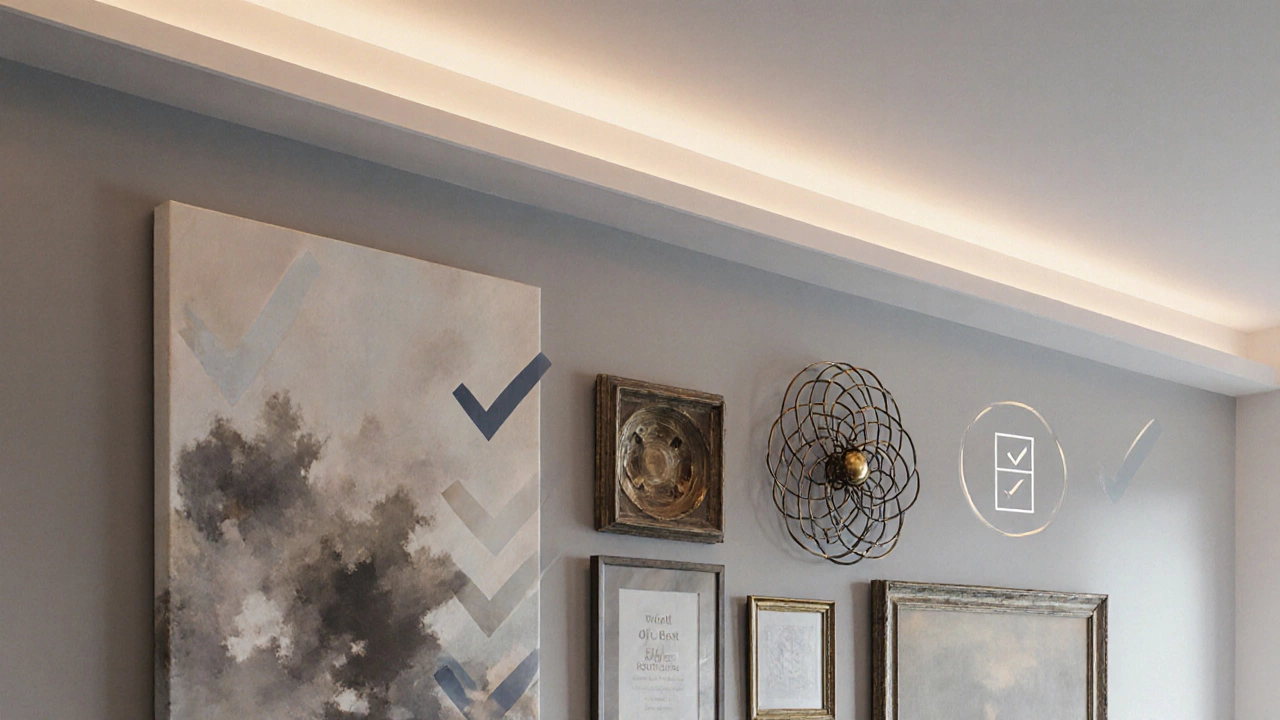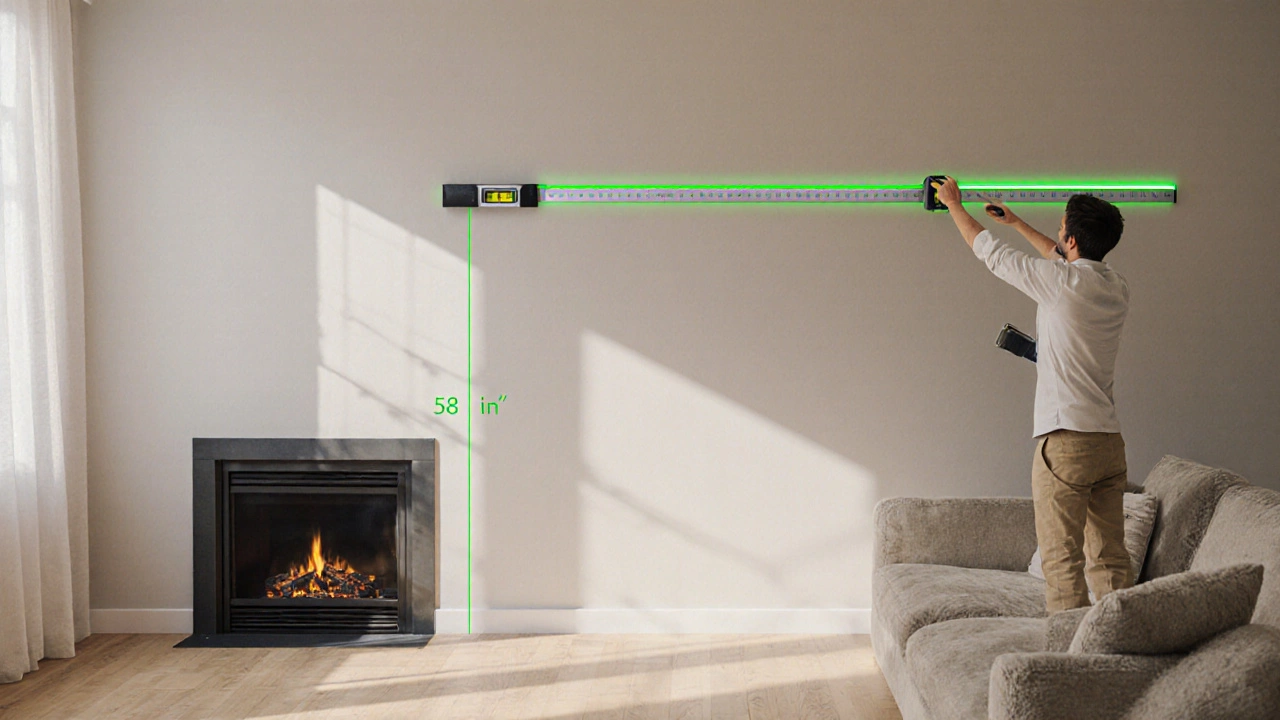Wall Decor Placement Calculator
Select dimensions to see recommended hardware.
When you start thinking about adding personality to a blank wall, the first question is usually how to make it look great. But a beautiful arrangement also needs to follow a few practical rules so you don’t end up with damage, fines, or a shaky shelf of pictures. Below you’ll find the most common wall decor rules that keep your space safe, legal, and visually pleasing.
Key Takeaways
- Check local fire codes and building regulations before hanging heavy items.
- Know what your homeowners association (HOA) or lease permits.
- Use proportion and scale to match artwork to wall size.
- Place pieces at eye level (57-60inches) for the best viewing experience.
- Choose appropriate mounting hardware for the material and weight of each item.
Safety and Legal Rules
Wall decor is any decorative element attached to a wall, from framed prints to woven tapestries. While it adds character, it also falls under safety and legal guidelines that differ by region and property type.
Fire code a set of regulations governing fire safety in residential and commercial buildings often restricts how close combustible artwork can be to heat sources. In Melbourne, for example, items placed within 12inches of a fireplace must be non‑flammable or secured with fire‑resistant brackets.
If you live in a community governed by a Homeowners Association (HOA) an organization that enforces neighborhood standards and aesthetic rules, you’ll usually need prior approval for large murals or exterior signage. The HOA may dictate colour palettes, frame styles, or even the maximum size of wall art visible from the street.
Renters should review their rental agreement the contract between tenant and landlord outlining permissible modifications. Most leases allow nails for lightweight frames but prohibit drilled holes for heavy mirrors or shelves without written consent. Some landlords provide removable adhesive strips as a compromise.
Ignoring these rules can lead to fines, loss of security deposit, or even voided insurance coverage if a fire starts because of a non‑compliant installation.

Design Principles That Keep Your Wall Looking Sharp
Beyond safety, good wall decor follows basic design fundamentals. Two of the most important are proportion the relationship between the size of an object and the space it occupies and the focal point the area that naturally draws the eye first in a composition.
For proportion, a common rule of thumb is to let the artwork occupy about 60-70% of the wall’s width if it’s the main feature. A small collection of prints can be arranged in a grid that takes up a quarter of the wall, creating a sense of balance without overwhelming the room.
Identify a focal point-often a fireplace, a large window, or a striking piece of furniture-and arrange decor so that it radiates outward. This prevents a chaotic look where every element competes for attention.
Scale matters too. A massive canvas in a tiny hallway looks out of place, while a tiny sketch on a large wall feels lost. Use a tape measure to mock‑up the dimensions on the floor before committing.
Practical Placement Tips
Once you know the rules, the next step is figuring out where to hang each piece. A reliable starting point is the "gallery height" of 57-60inches from the floor to the center of the artwork-this aligns with the average human eye level.
When grouping multiple pieces, keep the spacing consistent-typically 2-3inches between frames. Use a level and a laser measuring tool for precision; uneven gaps are immediately noticeable.
Consider light fixture any source of artificial lighting that illuminates a space placement. Spotlights or picture lights placed about 12-18inches above a piece can highlight texture without causing glare. If you have dim natural light, supplement with adjustable LED strips that won’t raise the room’s temperature.
For rooms with high traffic, keep décor out of the way of doors and walking paths. A piece behind a door can quickly become a phantom obstacle. Also, avoid placing reflective objects directly opposite windows to prevent unwanted glare.

Material & Mounting Choices
The type of material the substance from which a decorative object is made, such as wood, metal, canvas, or fabric you choose dictates the hardware you’ll need. Canvas prints can often be hung with simple picture hooks, while metal sculptures may require wall anchors rated for at least 15kg.
For renters or families with children, consider removable mounting systems like 3M Command strips. They hold up to 4kg per strip and peel away cleanly, leaving no holes. However, they’re not suitable for very heavy mirrors or wall‑mounted shelves.
When dealing with kids, avoid low‑profile items that could be pulled down, and place high‑value pieces out of reach. Rounded corners on frames reduce the risk of injury, and glass‑less alternatives (acrylic or PVC) cut down on breakage hazards.
Always check the wall type-drywall, plaster, brick, or concrete-before selecting screws or anchors. A stud finder helps locate wooden studs behind drywall, offering the strongest support for heavy items.
Checklist for Your Next Wall Project
- Review local fire code and any HOA or lease restrictions.
- Measure the wall and decide on a focal point.
- Choose artwork that respects proportion and scale.
- Determine the appropriate mounting hardware for the material and weight.
- Mark placement at eye level (57-60inches) and keep spacing consistent.
- Install lighting that enhances, not distracts.
- Secure items using studs, anchors, or removable strips as needed.
- Double‑check stability before stepping back.
Frequently Asked Questions
Can I hang a heavy mirror in a rented apartment?
Most leases require written permission for anything heavier than 5kg. Use a stud‑mounted bracket or ask the landlord for a professional installation to avoid damage to the wall.
What height is best for a gallery wall in a living room?
Start with the centre of the arrangement around 58inches from the floor. Adjust up or down if you have low seating or a high ceiling, but keep the overall visual line consistent.
Are adhesive strips safe for outdoor wall art?
No. Outdoor exposure to heat, moisture, and UV light degrades the adhesive. Opt for stainless‑steel hooks screwed into the exterior wall or a freestanding easel.
How do I make sure my wall art doesn’t violate fire safety codes?
Check the distance between any artwork and heat sources. Use fire‑retardant frames and avoid hanging polyester‑based prints directly above stoves or radiators. If in doubt, consult your local council’s fire safety handbook.
What’s the best way to group mismatched frames?
Create a visual rhythm by aligning a common element-like the bottom edge or the centreline. Use a mock‑up with cardboard cut‑outs to test the layout before hammering any nails.


